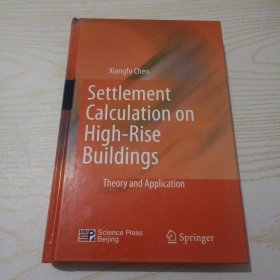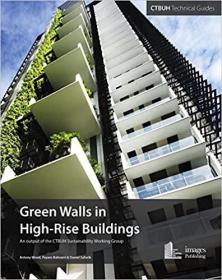
High-Rise Buildings Under Multi-Hazard Environment(精)
正版保障 假一赔十 可开发票
¥ 79.21 7.9折 ¥ 100 全新
库存2件
作者Mingfeng Huang
出版社科学出版社
ISBN9787030491237
出版时间2017-01
装帧精装
开本16开
定价100元
货号24028684
上书时间2024-10-30
- 最新上架
商品详情
- 品相描述:全新
- 商品描述
-
目录
1 Introduction
1.1 Background
1.2 Major Challenges of the Research
1.3 Monograph Organization
References
2 Overview on Performance-Based Engineering Under Multihazard Environments
2.1 Performance-Based Engineering and Design
2.1.1 Performance-Based Seismic Design (PBSD)
2.1.2 Performance-Based Wind-Resistant Design (PBWD)
2.1.3 Prediction of Typhoon and Its Risk by Simulation
2.1.4 Uncertainty Modeling in Wind Engineering
2.2 Dynamic Response Analysis of High-Rise Buildings
2.2.1 Analysis Method in Time Domain
2.2.2 Analysis Method in Frequency Domain
2.3 Structural Design Optimization
2.3.1 Classical Optimization Method
2.3.2 Fomaulations for Structural Optimization
2.3.3 Dynamic Response Optimization
2.4 Reliability-Based Design Optimization
2.4.1 Reliability Analysis Method
2.4.2 Reliability Index Optimization Approach
2.4.3 Performance Measure Optimization Approach
2.5 Summary
References
3 A Hybrid RANS and Kinematic Simulation of Wind Load Effects on Full-Scale Tall Buildings
3.1 Introduction
3.2 RANS Simulation of Mean Flow Field
3.3 Kinematic Simulation of Fluctuating Velocity Field and Poisson Equation
3.3.1 Energy Density of Anisotropic Turbulence Near the Ground
3.3.2 Energy Density of Anisotropic Turbulence Near the Ground
3.3.3 Pressure Fluctuations Associated with Simulated Velocity Fields
3.4 Case Study
3.4.1 Wind Tunnel-Based Pressure Measurements
3.4.2 Numerical Simulation
3.5 Results and Discussion
3.5.1 RANS Simulation
3.5.2 Kinematic Simulation
3.5.3 Results of Pressure Fluctuations
3.6 Conclusions
References
4 Peak Distributions and Peak Factors of Wind-Induced Pressure Processes on Tall Buildings
4.1 Introduction
4.2 Peak Factors for Non-Gaussian Processes
4.2.1 Hermite Moment-Based Method
4.2.2 Revised Hermite Model (RHM)
4.2.3 Generalized Peak Factor Considering Bandwidth Parameter
4.2.4 Skewness-Dependent Peak Factor
4.3 Peak Distribution Models
4.4 Asymptotic Extreme Value Distribution and Fractile Levels
4.5 Translated-Peak-process Method
4.5.1 Determination of Statistical Parameters of Weibull Distribution
4.5.2 Procedure of Translated-Peak-Process (TPP) Method
4.6 Comparison of Different Approaches Using the CAARC Building
4.6.1 Wind Tunnel-Based Pressure Measurements
4.6.2 Non-Ganssian Properties of Wind Pressure
4.6.3 Peak Factor Results and Discussions
4.7 Summary
References
5 Time-Domain Dynamic Drift Optimization of Tall Buildings Subject to Stochastic Excitation
5.1 Introduction
5.2 Dynamic Response Analysis of Tall Buildings
5.2.1 Equations of Motion
5.2.2 Vibration Analysis in Time Domain
5.2.3 Drift Performance of a Tall Building Under Wind and Earthquake
5.3 Time-Variant Reliability and Probabilistic Constraints
5.3.1 The Reliability of Top Deflection Performance
5.3.2 Bound Estimation of System Reliability for Interstory Drift Ratio
5.4 Dynamic Response Optimization
5.4.1 Formulation of Dynamic Response Optimization
5.4.2 Treatment and Explicit Formulation of Time-Dependent Drift Constraints
5.4.3 Explicit Formulation of Probabilistic Drift Constraints
5.4.4 Optimality Criteria Method and Design Procedure
5.5 Case Study
5.5.1 Performance of the CAARC Building Under Earthquake
5.5.2 Dynamic Response Optimization for Wind Hazards
5.6 Summary
References
6 Integrated Structural Optimization and Vibration Control for Improving Dynamic Performance of Tall Buildings
6.1 Introduction
6.2 A Benchmark Tall Building Under Wind Hazard
6.3 Optimal Performance-Based Design Problem
6.3.1 Optimal Design Problem Formulation
6.3.2 Explicit Formulation of Elastic Drift and Acceleration Constraints
6.3.3 Optimality Criteria Method
6.3.4 Design Optimization Results for the Uncontrolled Building
6.4 Vibration Control Using Smart Tuned Mass Damper (STMD)
6.4.1 Smart Tuned Mass Damper (STMD)
6.4.2 Control Algorithm and Controlled Building Responses
6.4.3 An Evaluation on the Capital Cost of the STMD
6.4.4 An Empirical Cost Model of the STMD
6.5 Optimal Performance-Based Design Integrating Vibration Control
6.5.1 Optimal Design Problem for a Controlled Building
6.5.2 Necessary Optimality Conditions
6.5.3 Design Optimization Results for the Controlled Building
6.5.4 Cost Comparison Among Vibration Control and Design Optimization Results
6.6 Summary
References
7 Performance-Based Design Optimization of Wind-Excited Tall Buildings
7.1 Introduction
7.2 Performance-Based Wind Engineering Design Framework
7.2.1 Acceleration-Related, Two-Level Serviceability Performance Criteria During Frequent or Occasional Wind
7.2.2 Elastic Performance Level for Rare Wind Hazards
7.2.3 Life Safety Performance During Very Rare Wind Hazards
7.2.4 Statistical Analysis of the Performance-Based Design Wind Speed
7.3 Nonlinear Static Analysis of Tall Buildings Subject to Very Rare Wind Excitations
7.4 Optimal Wind Performance-Based Design Considering Inelastic Effects
7.4.1 Explicit Formulation of Plastic Drift Constraints
7.4.2 Explicit Formulation of the Elastic Drift and Acceleration Constraints
7.4.3 Augmented Optimality Criteria Method
7.4.4 Two-Phase Execution
7.5 Case Study: The Illustrative Building Example
7.5.1 The 40-Story Residential Building
7.5.2 Wind Tunnel Test
7.5.3 Wind-Induced Pushover Analysis
7.5.4 Results and Discussions
7.6 Summary
References
8 Dynamic Identification and Performance Assessment
on a Full-Scale Tall Building
8.1 Introduction
8.2 Full-Scale Field Measurements
8.2.1 Measured Vibration Data
8.2.2 Identification Methods
8.2.3 Modal Frequency and Aerodynamic Damping Ratios
8.3 Wind Tunnel Investigation
8.3.1 Experiment Details
8.3.2 Aerodynamic Forces
8.3.3 Acceleration Response
8.4 Summary
References
9 Multihazard Performance Assessments of a High-Rise Building in Hong Kong
9.1 Introduction
9.2 Building Information and Comparison Cases
9.3 Earthquake Responses of Buildings in Hong Kong
9.3.1 Earthquake Load Input
9.3.2 Earthquake Response Analysis
9.4 Wind Tunnel Investigation
9.4.1 Experiment Details
9.4.2 Wind-induced Response Analysis
9.5 Comparison of Building Performances Under Wind and Earthquake Hazards
9.5.1 Building Height
9.5.2 Short- and Long-Distance Earthquakes
9.5.3 Mean Recurrence Interval
9.5.4 Damping Ratios
9.6 Summary
References
内容摘要
MingfengHuang编著的《High-RiseBuildingsUnderMulti-HazardEnvironment(精)》介绍了,Firstandforemost,IwouldliketooffermysincerestthankstoProf.LouWenjuan,forreadingthismonographandprovidingmanyvaluablecommentsthatimprovedthecontentsofthismonograph,aswellasforherconstructivesuggestionandcommentsthroughthisresearch.IhaveenjoyedthecamaraderieofthewindengineeringresearchgroupatZhejiangUniversity:Prof.XieJiming,Prof.ChenShuifu,Dr.ChenYong,Dr.ShenGuohui,Dr.YuShiceandDr.XuHaiwei.Ihavebenefitedmuchfromeachofthematvarioustimesandplaces:theirinsightfulandcriticalcommentsandsuggestions,theircollaborationandassistanceinresearch,aswellastheenjoyableatmospherebuiltbythemwithheartandsoul.IwouldalsoliketooffermysincerestthankstoprofessorsinHongKongUniversityofScienceandTechnology:Prof.ChartChun-man,Prof.KwokKennyC.S.andProf.TseTimK.T.,fortheircooperationandcontributiontothisresearch.
相关推荐
-

HIGH-RISE
八五品上海
¥ 110.00
-

HIGH-RISE
九品成都
¥ 108.00
-

High-Rise B
全新保定
¥ 27.60
-

SUNRISE TO HIGH-RISE
全新惠州
¥ 168.00
-

SUNRISE TO HIGH-RISE
九五品惠州
¥ 169.00
-

高层 HIGH-RISE mlgjcys
九品
¥ 1350.00
-

电影海报:HIGH-RISE
九五品天津
¥ 20.00
-

high rise building structures
八品苏州
¥ 298.00
-

Settlement Calculation on High-Rise Buildings
九品北京
¥ 50.00
-

Green Walls in High-Rise Buildings
九品北京
¥ 260.00
— 没有更多了 —













以下为对购买帮助不大的评价